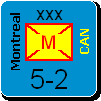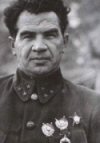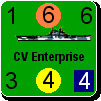Shannon V. OKeets
Posts: 22095
Joined: 5/19/2005
From: Honolulu, Hawaii
Status: offline

|
quote:
ORIGINAL: OzHawkeye
I've been loosely following the development of WiF for a few years now, wondering if it ever actually would make it to the PC (in saying that, I don't want to take away from the staggeringly epic job it must be). I've been a long time fan of WW2 games but all the games I've owned have left me with one criticism of them, namely being, it just wasn't "epic" enough.
By this I mean, we're talking about the most horrendous, all-encompassing war in all of human history. I'm the sort of gamer who thinks that should probably take more than a couple of hours to play out from start to finish.
Anyone remember SSI's old games for the Apple? Operation Market Garden for example? I'm hoping WiF will be like that, but expanded to include the whole world...lol.
So, my questions (if anyone is interesting in replying to a new member... hehe)
1. I'm a very experienced war gamer (20+ years), but no experience with WiF - will this be a problem?
2. Will WiF be as epic as some of you make it sound? I'm looking for a WW2 game that would take a HUGE length of time to play the entire war out on, not something (a la Strategic Command, Europe At War etc etc etc) that can be done in a few hours. Seriously, if it took me a year to play out a single '39-'45 game, I'd be happy as.
3. Will it be realistic enough that the Axis powers will be ultimately doomed (as they were), but moddable enough for me to craft a scenario to make for "a fair fight" where the Axis powers could actually win? (As much as anything else, a sheer manpower problem).
4. Will the AI be able to stand up to this challenge, if the game is as complex as it sounds? (finding human opponents isn't really an option for me)
5. Will the game model macro-choices as well as micro ones? By this I mean, not merely combat on a scale of "do I send these tank units this way or that way" (which I want), but also "do I contest the Atlantic with a huge sub building program, or give it up and divert more resources to the East?".
6. Will Air and Naval power figure as prominently as they should? I find this is often an overlooked area of the current range of "lighter" WW2 hex based games, particularly with regards to the strategic bombing campaigns employed against Germany and Japan.
7. Is the July 09 timeline looking firm?
8. Are people confident that too much micro-management can be avoided in a game of such scale?
Suffice to say, that after years (decades) spent wondering about "when will I get a truly all-encompassing, hex-based, WW2 game" if WiF is going to be what I hope it will be, then it's publisher/producer will get one unit purchase out of me that would (and I probably shouldn't say this...lol) completely ignore whatever pricetag they chose to put on it.
I'll let others answer your questions specifically, but here is something I wrote before I even signed a contract with Matrix to do the development. This was so I could "get my thoughts straight" as to what the AI Oopponent needed to do. Since I reread it every month or so, I thought it might provide you with a reasonable perspective on WIF.
===
I. Background
1.1 MWIF Objectives
World in Flames is a game of conquest where the winner is determined based on victory hexes held at the end of the game. Indeed, the game ends early if one side controls a sufficient number of victory hexes. Since control of a hex is only achieved by having land units either traverse the hex or occupy the country’s capital, land units determine who wins.
1.2 Land Units
There are dozens of types of land units and they can be corps or division size. In order for land units to attack outside of their home country, they need to be able to trace a supply line back to a supply source, either in their home country or an occupied country. To do that, they need to be near a headquarters unit which can trace supply back to a primary or secondary supply source using rail lines. Because the only way to take enemy held victory cities and enemy capitals is by attacking in foreign lands, these lines of communication are crucial for making progress.
1.3 Naval Units
If the enemy is overseas, then supply/communication lines need to extend overseas. This is done by having convoys in contiguous sea areas stretching from the overseas location to the home supply source. To keep overseas units in supply, there must be at least one convoy per sea area, thereby forming a convoy pipeline. The convoys are extremely vulnerable to attack, so naval units are used to defend friendly and attack enemy convoy pipelines. If all supply lines could be land based, then the naval units would have very little value. This is why historically Germany and the USSR fought such a prolonged and bloody conflict with virtually no naval units involved.
1.4 Air Units
Air units enable a player to provide additional striking power at the point of attack. This can be done when attacking or defending, on land and at sea. Air units also have a limited ability to transport land units and supply. One unique role they perform is to attack enemy production through strategic bombing. In general though, air units are augmentations to land and naval forces, which respectively perform the primary tasks of taking territory and providing supply.
1.5 Transportation Lines
In addition to the rail lines and convoy pipelines providing supply, these same 2 transportation lines are used to transport resources to factories and reinforcements to the frontlines. The mechanism is so similar to those for maintaining supply, that for most purposes they can be thought of as the same. What has to be kept in mind is that the importance of the rail lines and convoy pipelines is multiple: (1) to provide supply, (2) to send reinforcements to the frontlines, and (3) to send resources to factories.
1.6 Production
Once resources have been delivered to a factory, production points are produced. Depending on the intensity of the war effort, production points are converted into a number of build points. Build points are used to create new land, naval, and air units. They can also be used for repairing naval units, generating supply depots, and creating new factories. Being unable to generate a substantial number of build points each turn means that a country is unable to replace losses to its army, navy, air force, and merchant marine, and eventually it is doomed to defeat.
_____________________________
Steve
Perfection is an elusive goal.
|
 Printable Version
Printable Version












 New Messages
New Messages No New Messages
No New Messages Hot Topic w/ New Messages
Hot Topic w/ New Messages Hot Topic w/o New Messages
Hot Topic w/o New Messages Locked w/ New Messages
Locked w/ New Messages Locked w/o New Messages
Locked w/o New Messages Post New Thread
Post New Thread